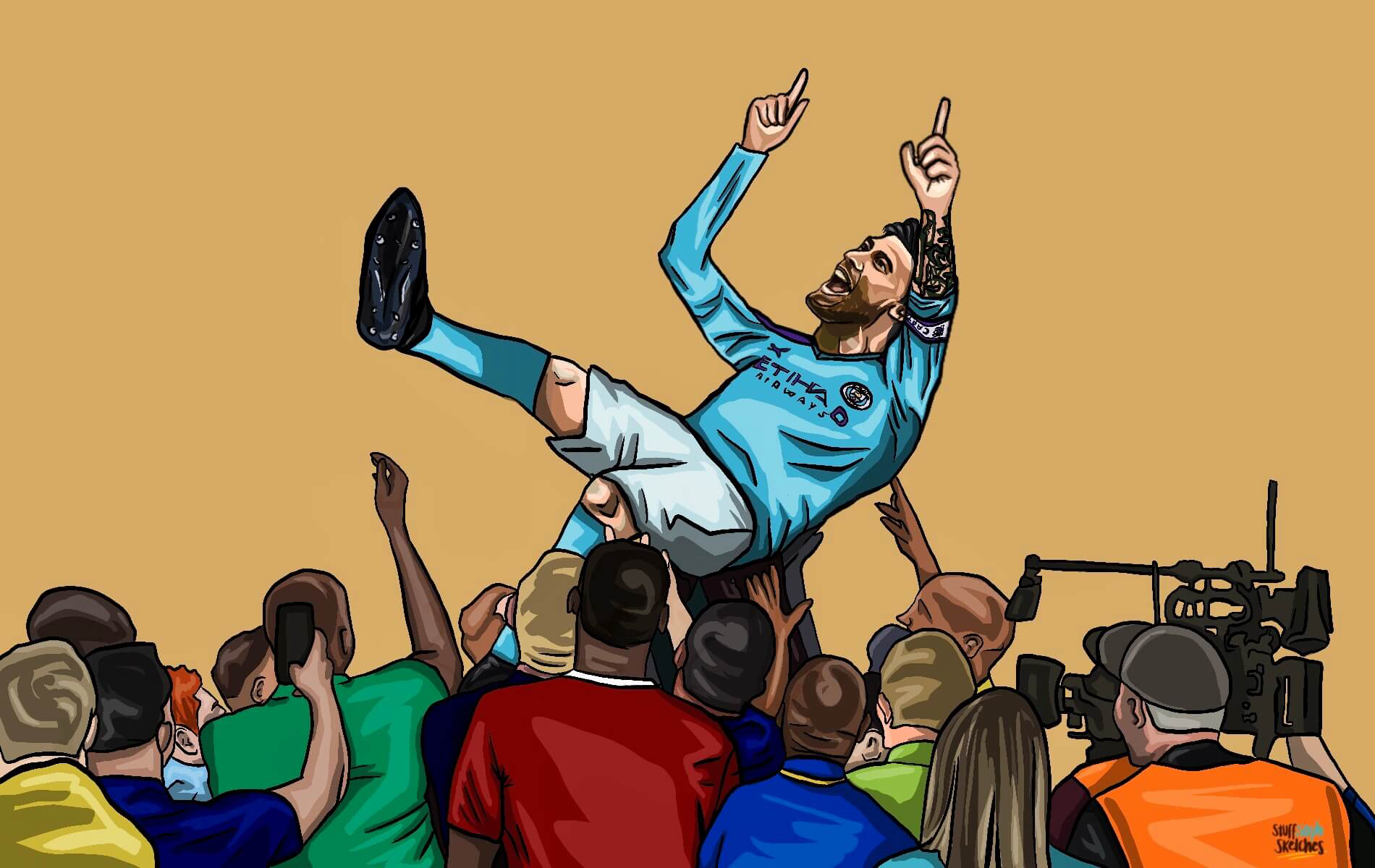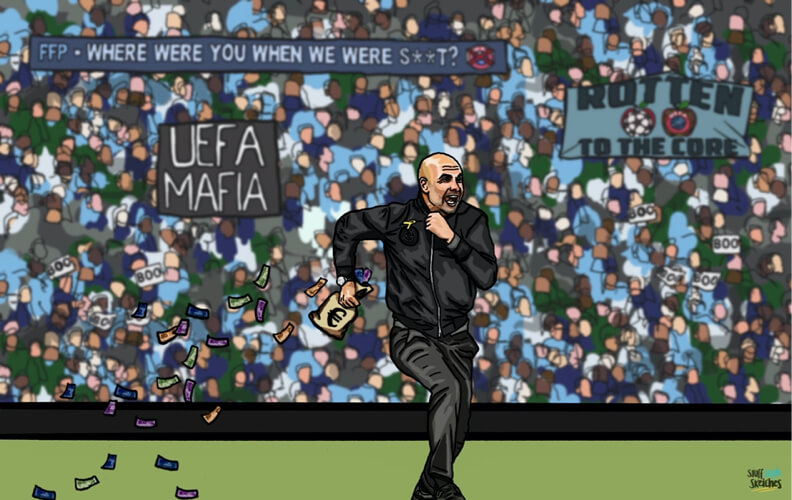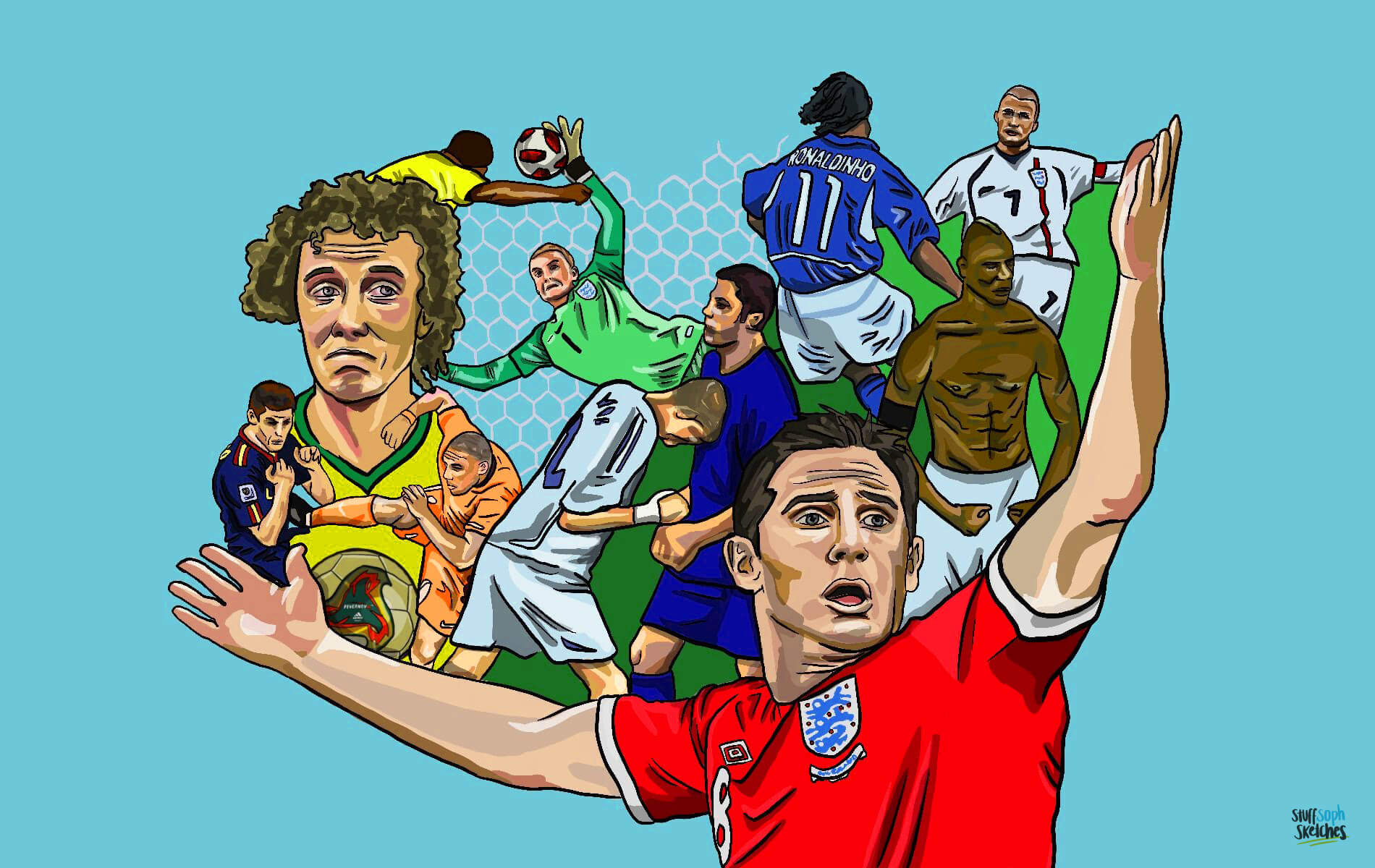For the modern football fan, playing attractive football has never been more important. It is not enough to simply win anymore – it has to be entertaining, electrifying football played with flair. Klopp’s champions will be celebrating Liverpool’s nineteenth League title knowing that their manager’s tactical nuance at times had them considered one of the greatest teams to ever play in the Premier League. Compare this to a haggard-looking Jose Mourinho, who (perhaps unfairly) has become the poster boy for imposing “park the bus” style tactics. Football is like a barrel of aging wine; as the years go by, the quality at the top level seems to improve. But how can players and managers ensure that they are not left drowning in the grit and sediment at the bottom?
Allow me to take you back to the mid-noughties. It is 2006 and ‘Fussball Dossier’ is taking place in a German television studio. To the bewilderment of the television crew, in storms Eric Cantona, back straightened and chest puffed, to bring an immediate halt to all proceedings. ‘This is Eric Cantona interrupting all transmissions, broadcasting live from the heart of Germany. Mes Amis Footballers! For too long we let liars and cheaters make a fool of the game. Look at this.’ Cantona continues to show the viewers at home a montage of horrendous challenges and passages of play that are truly against the spirit of the game. ‘Enough! I am here to remind the world that this game is about skills, heart, honour, joy, team spirit.’ It is with these qualities that Cantona reminds us that football needs to be made beautiful again. Just like that, my favourite ever marketing campaign was born. Nike’s Joga Bonito.
But what is Joga Bonito and where did it originate? The name translates to “play beautifully” and is based on the principles of playing with freedom, style and above all else, enjoyment. Joga Bonito is more of an abstract concept and state of mind, rather than a tactical strategy. The focus is on the individual’s ability to score goals of beauty. However, it would be naïve to suggest that adopting this outlook holistically is without risks and flaws. Like anything in life, balance is key. Most of us are aware that the ideals of Joga Bonito are mainly accredited to the Brazilian national team, but more specifically Mário Zagallo. Between 1958 and 1994, Zagallo became the first individual to win the FIFA World Cup as both a manager and as a player. He achieved this by successfully implementing the ideals of Joga Bonito. While other teams across the Atlantic, Spain for instance, focused on positional play and possession-based football (otherwise known as Juego de Posicion), Zagallo’s Brazil were more interested in passing the ball to ensure players are in a better position to score. The emphasis was always on creating chances and scoring goals. It would not be fair to discuss Joga Bonito and the success of Brazil without also mentioning João Saldanha, who many prefer to give credit to for the concept of “playing beautifully”. He managed Brazil’s national team between 1969 and 1970 before Mário Zagallo took over and replaced him. He once said, ‘Brazilian football is a thing played to music’. This perhaps is why countless marketing campaigns (such as Nike’s Joga TV, of which I will revisit shortly) that focalise anything to do with the Brazilian game are accompanied with a saudade Samba score. I’m no dancer, but the Samba rhythm focuses on free bodily movement. To do “The Samba” one does not need to be athletically superior or undertake years of training. Many people are unaware that the creation of Joga Bonito can even be accredited to slaves in Africa, who played in secret away from their owners. This is a truly striking juxtaposition of apprehended individuals finally able to express themselves freely in short bursts of euphoria. Something beautiful found amongst the most reprehensible evil.
It is hard to disregard the appeal of Joga Bonito. I would now like to return to Nike’s Joga TV, fronted by Eric Cantona in 2006, of which I was enamoured with. Everything about the campaign was perfect. The poetic declarations of appeal from Cantona interlaced with my favourite stars performing the most delightful flicks and tricks was everything I needed. I could not wait for the next ad to come out. I watched them over and over. I still do. The first time I saw Ronaldinho take out his gold and white Nike Tiempo boots from a golden suitcase, to then play football tennis with the crossbar, I was speechless. Of course, my bubble was promptly burst by Soccer AM, who I will never forgive for proving that the video was a manipulation. Tim Lovejoy in his Chelsea kit somehow did not capture the same magical essence. Nonetheless, the creativity and uniqueness of the clip will forever be engraved into my memory. Echoing Cantona, Joga Bonito is ‘about skills, heart, honour, joy, team spirit’. And so, without further ado, here are my top five moments from Nike’s inspirational campaign:
5. Skill
‘Football is like fencing. It is a noble art.’ I do wonder whether these dreamy similes are the creation of Cantona himself, or whether they are cleverly scripted by Nike for their talismanic frontman. I’m inclined to believe the latter. When Eric starred in a Eurostar commercial, many (wrongly) believed the line ‘does a bird in a cage sing as sweetly as a bird who is free?’ to be his own. Anyway, please don’t allow my cynicism to detract from what I’m trying to celebrate. The clip showcases two of the biggest egos in world football: Zlatan Ibrahimović and Cristiano Ronaldo. The fresh-faced duo go head-to-head in a bid to perform the most impressive footballing skills. As time and technology have evolved, I enjoy the archaic portable DVD player that Cantona holds even more so. On the screen? ‘This is Zlatan’, brandishing a ravishing pair of blue Mercurial Vapours. My younger self was more impressed by the resplendent gold and white Vapours (with a matching ball) that feature in the video. Unfortunately, I’m sure I would have looked about as cool as Phil Jones in his salmon boots, had I made the purchase. If anybody could pull them off, it was Ronaldo, as validated by the stepovers, rainbow flicks and pinpoint accuracy demonstrated in the video…only to be mirrored by Zlatan. As Cantona says: ‘Who wins? I don’t know.’
4. Honour
What a sublime player Thierry Henry was. Although, the other street footballers in this video aren’t bad either! If the skills presented in the last clip were from out of this world, then the trickery seen in ‘Honour’ is beyond our cosmos. There is something so attractive, charming and rogue about street football. After all, ‘In the streets, you cannot hide behind the ref’s call’. I don’t know what gives me more joy, Henry’s backwards moonwalking stepovers, the goal scored from behind the frame, or Cantona’s white Harrington jacket.
3. Heart
As a Manchester United fan, perhaps my bias will shine through here a little. Realistically, let’s be honest, this video is toe-curling. Nonetheless, it ranks highly for pure comedic value. As you’ve probably established, the video again begins with Cantona, as if auditioning for a role as the Tin Man in an awful Wizard of Oz sequel, announcing ‘I had a heart. And I know, without heart you cannot play’. I cannot tell you how many times I have watched and laughed at Alex Ferguson’s ghastly acting and the line: ‘Wayne, where you going? Stay where you are!’ In contrast, the blue Total 90 ball that goalkeeper Rooney takes around his teammates is a thing of divine beauty. Love him or hate him, Wayne’s catlike reflexes between the sticks are impressive. With all that being said, it is an unlikely Tim Howard who steals the thunder in the penultimate stages. In a recreation of his famous goal against Bolton, it is an actual goalkeeper who reminds Rooney who is in charge.
2. Team
‘You can sing like the canary. You can be a virtuoso. But believe me, you only make beautiful music if you know how to play in an orchestra’. Drums and maracas in hand, enter the national team of Brazil. It is the omnipotent bond between music and football that makes this clip so special. It is the sound of Mas Que Nada by Sergio Mendes that helps establish the care-free, playful and effervescent nature of this Joga Bonito instalment. It’s hard to pinpoint any moments that I can name as my favourite. The subtleness of Robinho’s nutmeg of the kit man? The cheekiness of Ronaldinho’s fake pass to the referee? If my hand were to be forced, nostalgia would have me choose the final shot of Adriano, Ronaldo, Kaká and Robinho. Like phantoms from a happier time, their synchronised dancing and natural elation is hard not to be infected by.
1. Joy
It is fitting for me that ‘Joy’ takes the number one spot. After all, is joy not the single greatest core principle that underpins everything in football? Is there a purer happiness than that of a child? We are transported to the past in my favourite Joga Bonito video, with magnificent archival footage of a young, buck-toothed Ronaldinho terrorising his opposition in a futsal tournament. The clip is edited alongside adult Ronaldinho in his prime, almost mirroring the exact ghost of his childhood. After a series of sombrero kicks and flicks that I would have no idea how to title, it is the parting image of young Ronaldinho looking happier than the morning sun and Cantona’s final message that resonates with me the most. ‘So, my advice to you… is never grow up, my friends.’



